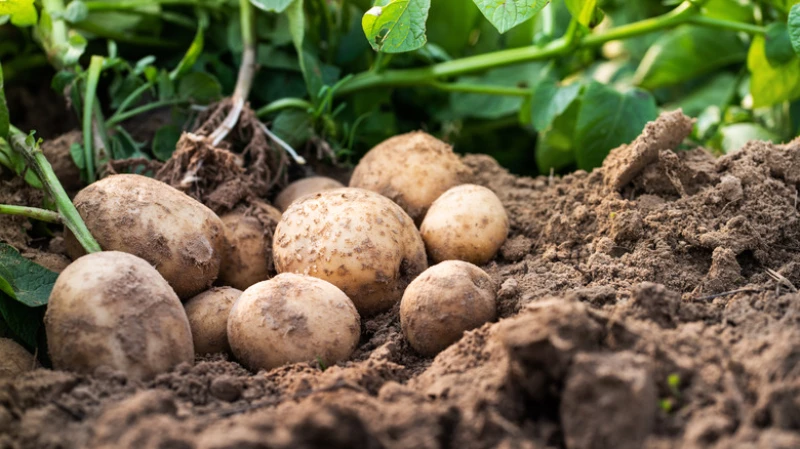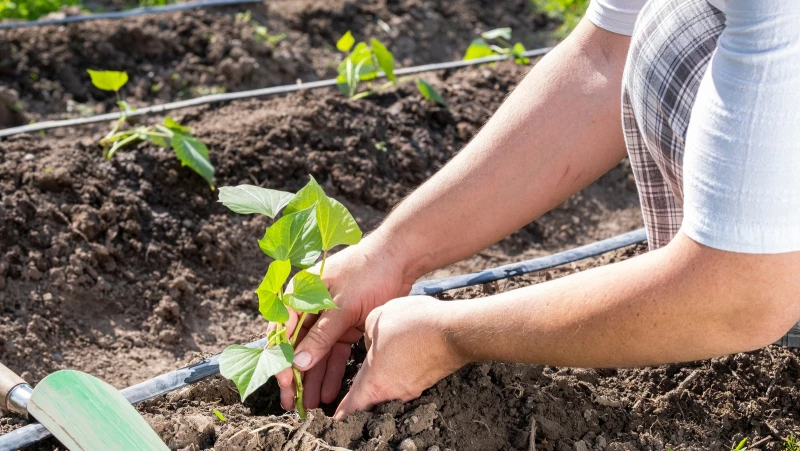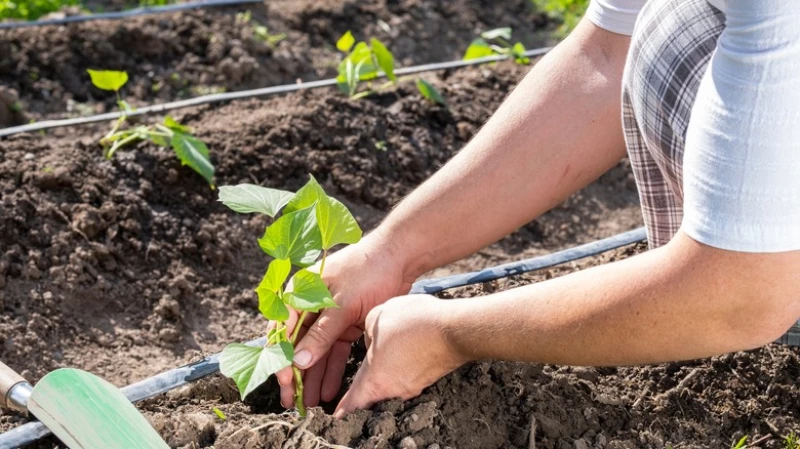Love both spuds and sweet potatoes equally? Have you thought about how great it would be if you could plant a couple of both in your garden? Can you grow them the same way? Sadly, the answer is: No, you can't.
It's not unusual for people to assume that potatoes and sweet potatoes are close relatives. However, they are distinct root crops with unique growing requirements. Sweet potatoes (Ipomoea batatas) belong to the Convolvulaceae family (same as the morning glory flower), while potatoes (Solanum tuberosum) are part of the nightshade, or Solanaceae, family. While potatoes are considered typical tubers, sweet potatoes have tuberous roots and are not considered true tubers. Despite their differences, these two do share some similarities. Both are versatile staples in many cuisines, providing essential nutrients like carbohydrates, fiber, and vitamins.
However, the assumption that growing potatoes and sweet potatoes is a similar process is a common misconception. Each one demands distinct care and cultivation methods, as well as distinct storage conditions. As we delve into the specifics, it becomes evident that these root vegetables require unique approaches throughout their growth cycles.
The basics of growing potatoes
Cultivating sweet potatoes

Sweet potatoes are commonly grown from seed potatoes, which are small, whole potatoes or pieces with at least one "eye" or bud. There are various varieties of sweet potatoes. Whichever you choose, select certified disease-free seed potatoes from a reliable source to achieve healthy growth. Prior to planting, enrich the soil with organic matter like compost or well-rotted manure. Sweet potatoes benefit from a balanced fertilizer with a slightly higher potassium content. Avoid excessive nitrogen, as it promotes foliage growth at the expense of tuber development.
To start planting, dig furrows that are about 4 to 6 inches deep and place the seed potatoes (with the eyes or buds facing upward) about 16 to 18 inches apart. The next step is to cover them with soil, leaving a small mound. Sweet potatoes thrive in well-drained, sandy loam soil with a slightly acidic pH. They require full sunlight for at least six hours a day. As the plants grow, additional soil is hilled around the stems to protect the developing tubers. Adequate watering (about 1 to 2 inches a week) is crucial. Applying a layer of organic mulch, such as straw or hay, helps conserve soil moisture, suppress weeds, and regulate soil temperature. Practice good garden hygiene by removing plant debris and weeds regularly.
Planting sweet potatoes typically occurs in early to mid-spring or a few weeks before the last frost depending on your area. They take about 90 to 170 days to mature. After harvest, sweet potatoes are stored in well-ventilated cool, dark conditions that help ensure a long shelf life.
Sweet Potatoes vs Potatoes: Understanding Their Differences
Sweet potatoes are usually propagated using "slips," or young shoots, that grow from a mature sweet potato. These slips are planted about 4 to 5 inches deep into the soil, with the spacing between each slip depending on the sweet potato variety. Unlike potatoes, sweet potatoes need more space to spread, and vines are encouraged to trail along the ground. Sweet potatoes favor sandy loam with a slightly acidic to neutral pH. Loose soil allows them to expand more easily and ensures good drainage to prevent waterlogged conditions.
Unlike potatoes, they thrive in warmer climates and need full sun (except when newly planted). These crops prefer slightly moist soil, and about an inch of water every week is usually sufficient. Planting typically takes place in late spring, and sweet potatoes require approximately 100 to 150 days to reach maturity. Harvesting should be done before the first frost. Once harvested, sweet potatoes benefit from warm curing before cool, dry storage.
Potatoes and sweet potatoes do share some similarities. They're both classified as root vegetables and can be grown in farm settings, backyards, grow bags, and container gardens. However, their journeys from seed to harvest diverge significantly. Understanding their distinct needs will ensure you have bountiful harvests, especially if you intend to grow both potatoes and sweet potatoes in your garden.








